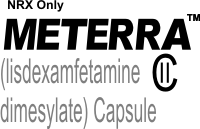| ||||||||||||||||||||||||||||||||||||||||||||||||
 MifepristoneFrom Wikipedia, the free encyclopedia
History
API Complex -
Taj Pharmaceuticals Ltd. bulk drug complex located at Vapi (State of Gujrat) is one of the largest integrated antibiotic manufacturing complexes in its class. This facility specializes in the manufacture of cephalosporin API's (Active Pharmaceutical Ingredients) and has an installed manufacturing capacity of over 800 MT per annum. Set in a total land area of nearly 50,000 sq. mts., this facility is a massive, state-of-the-art, most modern manufacturing complex that produces a wide range of new generation cephalosporin bulk actives.
This facility has over 85 reactors of varied metallurgy including titanium, cast alloy, graphite, PVDF and PTFE with over 300 kl of handling capacity together with several centrifuges, driers and varied production equipment. The facilities are versatile and are capable of carrying out varied reactions ranging from -70°c to +150°c.
Taj Pharmaceuticals Ltd. is known for its world-class crystallisation and lyophillisation facilities, which provide a global competitive edge in sterile product manufacture. Taj also has a unique spray drying facility, which ensures the lowest levels of moisture content.
Taj Pharmaceuticals Ltd. has the capability to handle highly complex and hazardous reactions with utmost safety and productivity. Taj operations are backed by a full spectrum of utilities including a captive power generation plant, high technology solvent recovery facilities, sophisticated quality control equipment and a 'zero discharge' environment-friendly effluent treatment plant.
Business today face far more competition and external influences then they did five to 10 years ago. Competing in today's global economy can be tough for the small to midsize business (SMB). Smaller organization faces the same market pressure as the Global 2000. They are challenged by the need the customer and compliance mandates, manage supplier effectively, control Costs, and gain new customers to grow the business.
For the majority of firms in this industry, the actual manufacture of drugs is the last stage in a lengthy process that begins with scientific research to discover new products and to improve or modify existing ones. The R&D departments in pharmaceutical and medicine manufacturing firms start this process by seeking and rapidly testing libraries of thousands to millions of new chemical compounds with the potential to prevent, combat, or alleviate symptoms of diseases or other health problems. Scientists use sophisticated techniques, including computer simulation, combinatorial chemistry, and high-through-put screening, to hasten and simplify the discovery of potentially useful new compounds.
| ||||||||||||||||||||||||||||||||||||||||||||||||
Monday, October 5, 2009
Mifepristone..200 mg :: Mifebort :: tablets :: medical termination of intrauterine pregnancy
Subscribe to:
Comments (Atom)





